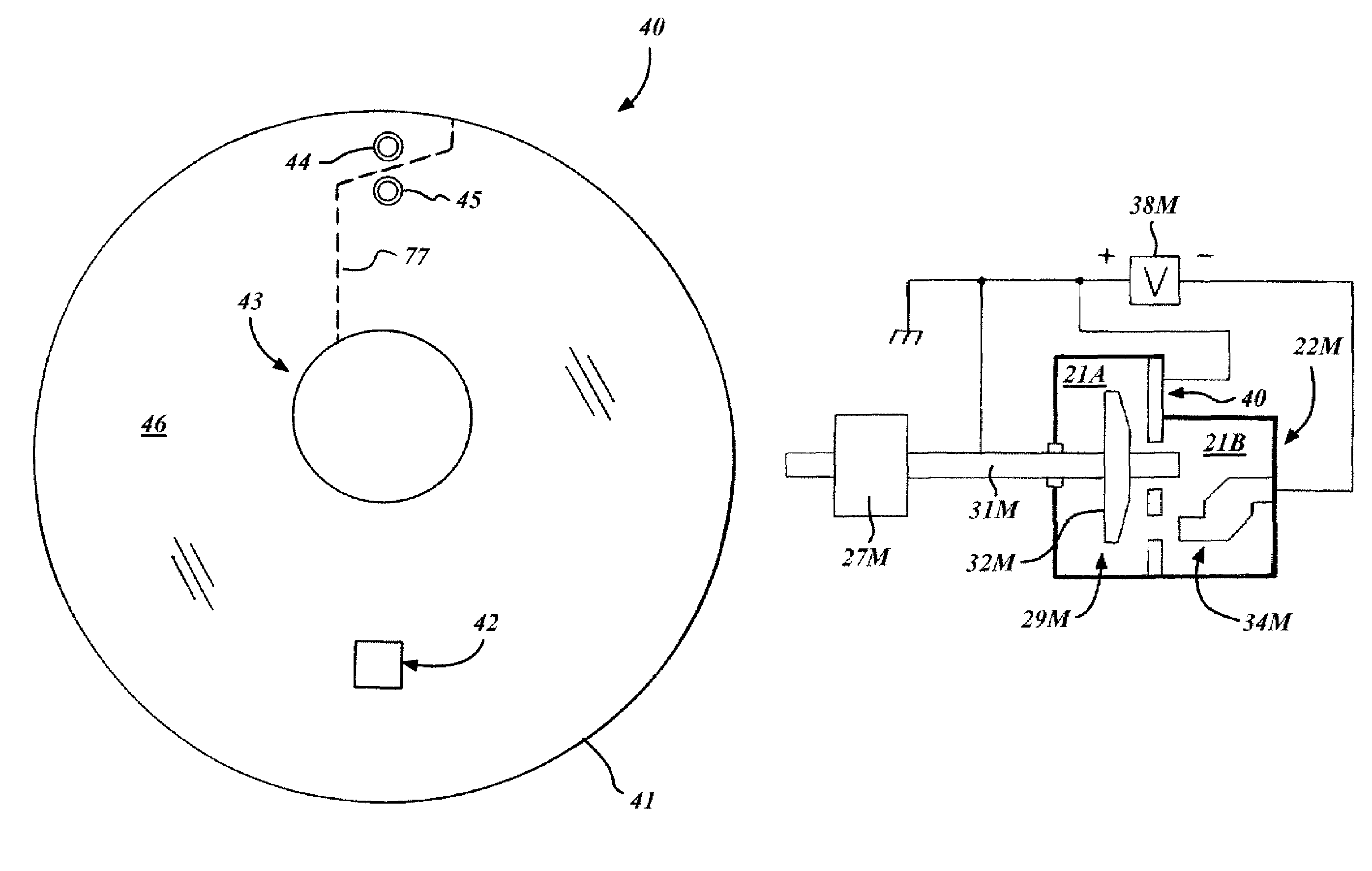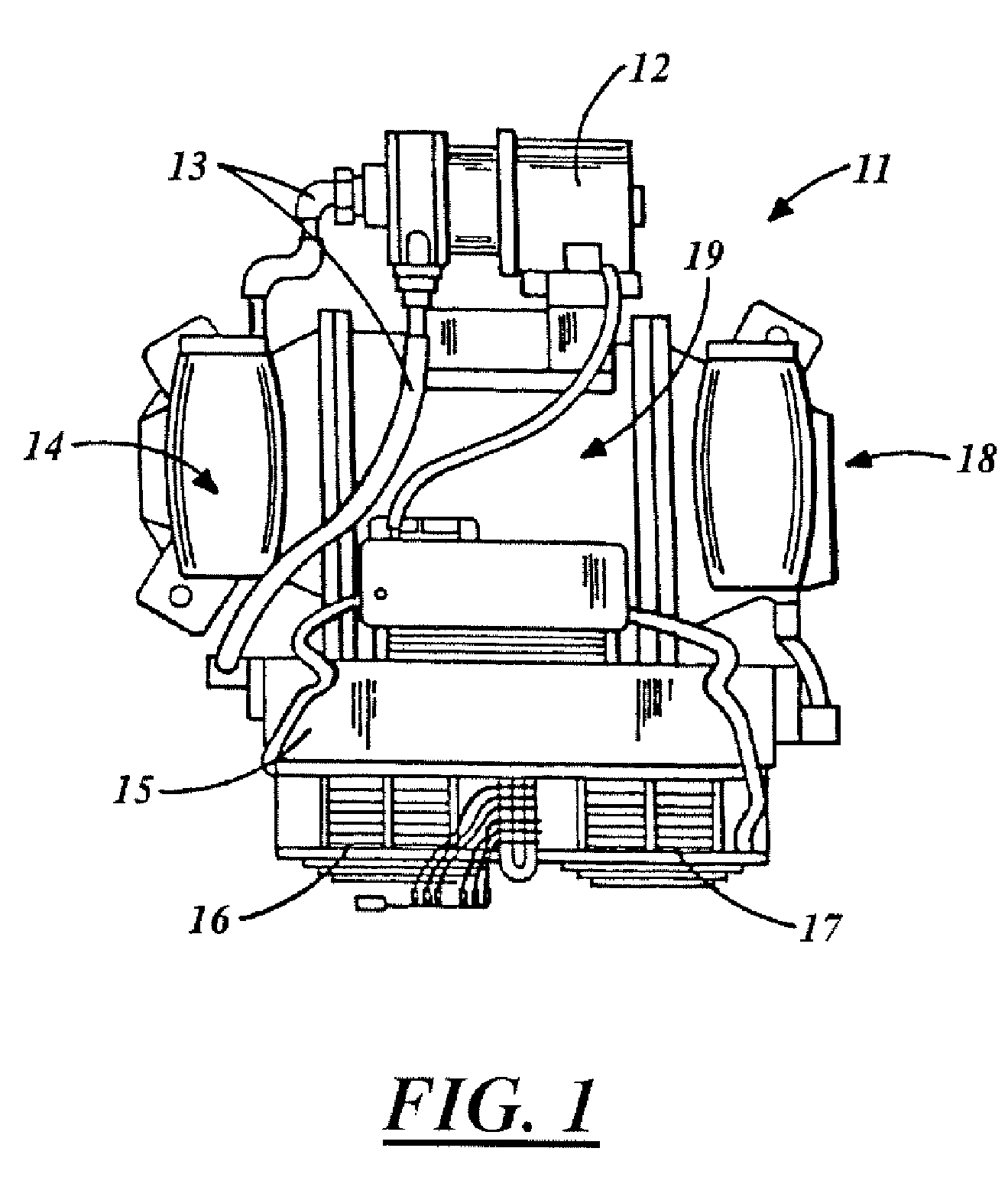Structure for collecting scattered electrons
a technology of electrons and structures, applied in the field of electron collectors, can solve the problems of x-ray tube heat up, high thermal stress on x-ray tube components, and additional thermal heating of x-ray tubes
- Summary
- Abstract
- Description
- Claims
- Application Information
AI Technical Summary
Benefits of technology
Problems solved by technology
Method used
Image
Examples
Embodiment Construction
[0023]FIG. 1 illustrates a plan (i.e., top) view of a largely conventional x-ray system 11. As shown, the x-ray system 11 generally includes an anode end 14, a cathode end 18, and a center section 19. The center section 19 is situated between both the anode end 14 and the cathode end 18 and contains an x-ray tube 20 that serves to generate x-rays.
[0024]FIG. 2 illustrates a sectional side view of the x-ray system 11 depicted in FIG. 1. As shown in FIG. 2, the x-ray tube 20 in the system 11 largely includes a vacuum vessel 22 that is situated in a chamber 25 defined within a casing 28. The vacuum vessel 22 is constructed to endure very high temperatures and includes x-ray transmissive materials such as, for example, glass or Pyrex, and may even include sections of non-transmissive materials such as stainless steel or copper. The casing 28, on the other hand, may include, for example, aluminum and may also be lined with lead to block the passage of x-rays therethrough. Per convention, ...
PUM
 Login to View More
Login to View More Abstract
Description
Claims
Application Information
 Login to View More
Login to View More - R&D
- Intellectual Property
- Life Sciences
- Materials
- Tech Scout
- Unparalleled Data Quality
- Higher Quality Content
- 60% Fewer Hallucinations
Browse by: Latest US Patents, China's latest patents, Technical Efficacy Thesaurus, Application Domain, Technology Topic, Popular Technical Reports.
© 2025 PatSnap. All rights reserved.Legal|Privacy policy|Modern Slavery Act Transparency Statement|Sitemap|About US| Contact US: help@patsnap.com



